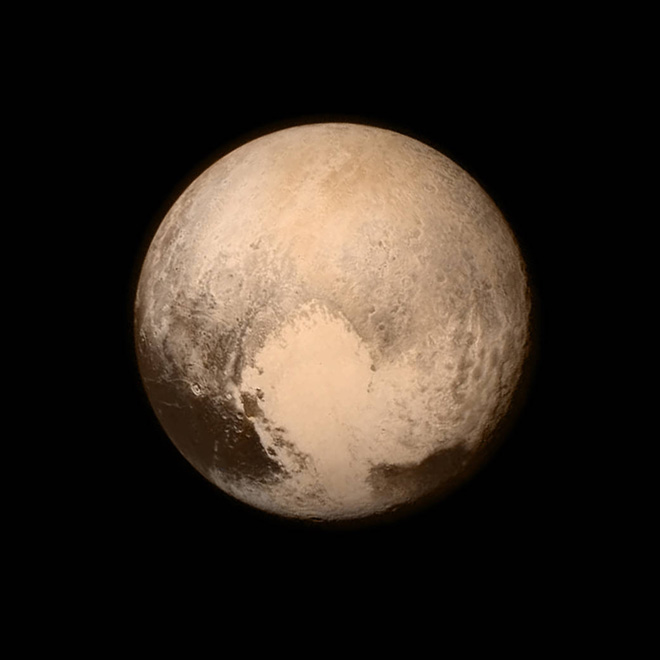
Pluto nearly fills the frame in this image from the Long Range Reconnaissance Imager (LORRI) aboard NASA's New Horizons spacecraft, taken on July 13, 2015 when the spacecraft was 476,000 miles from the surface. This is the last and most detailed image sent to Earth before the spacecraft's closest approach to Pluto on July 14. Photo: NASA/APL/SwRI.
WASHINGTON (PTI): NASA's New Horizons mission has settled a decades-long debate about the size of Pluto, discovering that the dwarf planet is 2,370 km in diameter, larger than many prior estimates.
The size was determined from images acquired with the Long Range Reconnaissance Imager (LORRI) aboard New Horizons spacecraft.
The result confirms what was already suspected: Pluto is larger than all other known solar system objects beyond the orbit of Neptune.
"The size of Pluto has been debated since its discovery in 1930. We are excited to finally lay this question to rest," said mission scientist Bill McKinnon, Washington University, St. Louis.
Pluto's newly estimated size means that its density is slightly lower than previously thought, and the fraction of ice in its interior is slightly higher.
Also, the lowest layer of Pluto's atmosphere, called the troposphere, is shallower than previously believed.
Measuring Pluto's size has been a decades-long challenge due to complicating factors from its atmosphere. Its largest moon Charon lacks a substantial atmosphere, and its diameter was easier to determine using ground-based telescopes.
New Horizons observations of Charon confirm previous estimates of 1,208 km across.
LORRI has also zoomed in on two of Pluto's smaller moons, Nix and Hydra.
"We knew from the time we designed our flyby that we would only be able to study the small moons in detail for just a few days before closest approach," said New Horizons principal investigator Alan Stern of the Southwest Research Institute, Boulder, Colorado.
"Now, deep inside Pluto's sphere of influence, that time has come," Dr. Stern said.
Nix and Hydra were discovered using the Hubble Space Telescope in 2005. Even to Hubble, they appeared as points of light, and that's how they looked to New Horizons until the final week of its approach to Pluto.
Now, the latest LORRI images show the two diminutive satellites not as pinpoints, but as moons seen well enough to measure their sizes.
Nix is estimated to be about 35 km across, while Hydra is roughly 45 km across. These sizes lead mission scientists to conclude that their surfaces are quite bright, possibly due to the presence of ice.
However, Pluto's two smallest moons, Kerberos and Styx are smaller and fainter than Nix and Hydra, so they are harder to measure.
Mission scientists should be able to determine their sizes with observations New Horizons will make during the flyby today and will transmit to Earth at a later date.
After nine years and three billion miles travelled, the New Horizons probe will pass within just 12,500 km of Pluto's surface.
 Previous Article
Previous Article Next Article
Next Article













The Indian Air Force, in its flight trials evaluation report submitted before the Defence Ministry l..
view articleAn insight into the Medium Multi-Role Combat Aircraft competition...
view articleSky enthusiasts can now spot the International Space Station (ISS) commanded by Indian-American astr..
view article